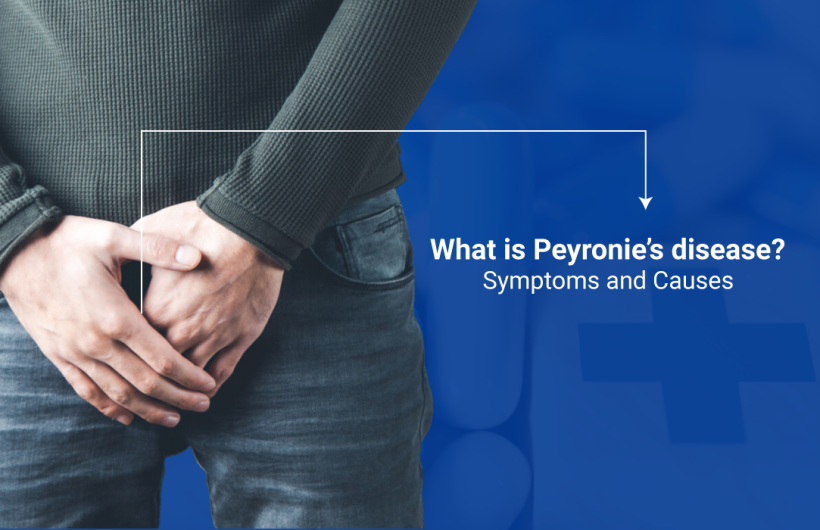Peyronie’s disease is a condition that affects the penis, causing curvature or bending during erections. Despite being relatively unknown to many, this disease can have a significant impact on a man’s quality of life and intimate relationships. In this blog, we will explore the symptoms, causes, and available treatments for this disease, shedding light on this often misunderstood condition.
Symptoms of Peyronie’s Disease
Recognizing the symptoms of Peyronie’s disease is crucial for early diagnosis and intervention. The primary symptom is the presence of a noticeable curvature or bend in the penis, particularly during erections. This curvature can vary in severity, ranging from mild to severe, and may develop gradually over time.
In addition to penile curvature, individuals with Peyronie’s disease may experience other symptoms, including:
- Penile Pain: Some men with this disease may experience pain or discomfort in the penis, especially during erections or sexual activity.
- Penile Plaque: A hardened lump or plaque may form beneath the skin of the penis, causing palpable or visible irregularities.
- Erectile Dysfunction: Peyronie’s disease can sometimes lead to erectile dysfunction, making it difficult to achieve or maintain an erection sufficient for sexual intercourse.
It’s essential to note that symptoms can vary from person to person, and not all individuals may experience the same degree of curvature or accompanying symptoms.
Peyronie’s Disease Causes
The exact cause of Peyronie’s disease remains unclear, but several factors are believed to contribute to its development. These include:
- Trauma or Injury: Many cases of Peyronie’s disease occur following trauma or injury to the penis, such as during sexual activity or accidents. Microscopic tears in the penile tissue can lead to inflammation and scarring, resulting in the formation of plaques.
- Genetics: There may be a genetic predisposition to Peyronie’s disease, as it tends to run in families. Certain genetic factors may influence collagen production and tissue repair processes, increasing the likelihood of developing penile plaques.
- Connective Tissue Disorders: Individuals with certain connective tissue disorders, such as Dupuytren’s contracture, may have an increased risk of developing this disease. These conditions involve abnormalities in collagen metabolism, which can contribute to the formation of fibrous tissue in the penis.
- Age: Peyronie’s disease is more common in older men, with the risk increasing with age. Changes in tissue structure and elasticity associated with ageing may contribute to the development of penile plaques.
While these factors may increase the risk of Peyronie’s disease, not all individuals with predisposing factors will develop the condition. It is likely that a combination of genetic, environmental, and lifestyle factors contributes to its onset.
Diagnosis and Treatment of Peyronie’s Disease
Diagnosing Peyronie’s disease typically involves a physical examination and a discussion of symptoms with a Urologist. In some cases, imaging tests such as ultrasound or magnetic resonance imaging (MRI) may be ordered to assess the extent of penile curvature and the presence of plaques.
Treatment options for Peyronie’s disease aim to alleviate symptoms, improve penile function, and reduce curvature. Common approaches include:
- Medications: Oral medications such as collagenase clostridium histolyticum or vitamin E may be prescribed to help soften plaques and reduce penile curvature. Additionally, medications like phosphodiesterase-5 inhibitors (e.g Sildenafil, tadalafil) may be used to manage erectile dysfunction associated with it
- Penile Traction Therapy: This nonsurgical approach involves wearing a device on the penis to gradually stretch and straighten the curvature over time. Penile traction therapy is most effective when used in conjunction with other treatments.
- Injections: Injectable medications, such as verapamil or interferon, may be directly administered into penile plaques to help soften scar tissue and reduce curvature. These injections are typically performed in a healthcare provider’s office.
- Surgery: In severe cases of this disease where conservative treatments have been unsuccessful, surgical intervention may be considered. Surgical procedures aim to correct penile curvature, remove plaques, and restore normal erectile function. Options include penile plication, plaque incision or excision, and penile prosthesis implantation.
Can a man face low confidence due to Peyronie’s Disease?
Yes, Peyronie’s disease can lead to low confidence in men due to physical changes like penile curvature, plaque formation, and erectile dysfunction. These changes can cause embarrassment, anxiety, and feelings of inadequacy, affecting sexual performance and satisfaction. The lack of awareness and understanding of the condition can worsen feelings of isolation. Seeking support from healthcare providers, mental health professionals, and partners, as well as exploring treatment options, is crucial for coping with the psychological impact of Peyronie’s disease and restoring confidence and well-being.
Conclusion
In conclusion, Peyronie’s disease can significantly impact a man’s physical and emotional well-being, leading to low confidence and affecting intimate relationships. The physical changes associated with the condition, such as penile curvature and erectile dysfunction, can cause embarrassment and anxiety. Seeking support from urologist and partners is essential for coping with the psychological impact of Peyronie’s disease and restoring confidence and well-being.
One such expert in the field of urology is Dr. Saket Narnoli, whose expertise and dedication to addressing Peyronie’s disease have helped many individuals regain confidence and improve their quality of life. Through his comprehensive approach to treatment and patient-centred care, Dr. Saket Narnoli has made significant contributions to the field, offering hope and support to those affected by this challenging condition.






